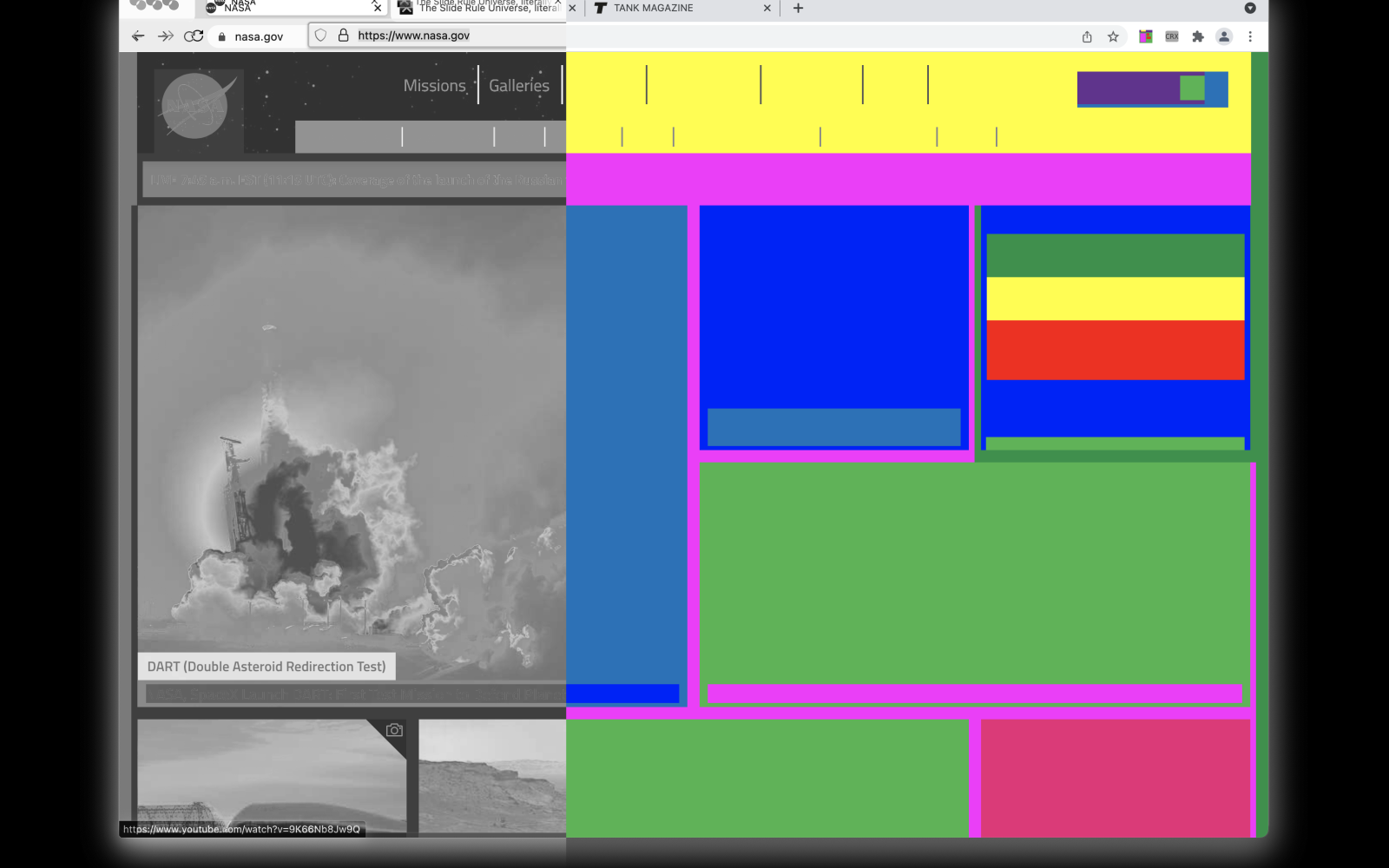Browser Art. Navigating in Style
KIT Research Project on Artistic Browser Applications
What difference does it make whether we use Opera, Internet Explorer, Firefox, Chrome or Safari to browse the web? It looks like it's mainly a matter of taste, or perhaps prestige, since they all seem to do almost the same thing. But browsers shape and filter the way we engage with Internet content. And while some even predict the end of web browsers, the question of how we navigate the Internet remains to be answered.
From the very beginning, the conditions and possibilities of web browsers have been analyzed, developed, and tested in both artistic and technical fields. The results of these experiments were often surprisingly different from the existing commercial solutions
Browser Art. Navigating in Style
The German Research Foundation (DFG) funded project »Browser Art. Navigating in Style« is dedicated to artistic browser applications, a genre of net art of the first generation that has received insufficient scholarly attention so far. The research project initiated by Inge Hinterwaldner at the Institute of Art and Architectural History of the Karlsruhe Institute of Technology (KIT) is part of the DFG priority program »The Digital Image«.
Browser Art
While the page metaphor (homepage, website) has largely prevailed in the development of commercial web browsers, the applications or browser plug-ins investigated here offer alternative ways of seeing and accessing the Internet. Why shouldn't browsers also be hybrids and be of use as graphics programs? Or merge with a gamified vision of paradise? It's not unusual for them to offer a wide variety of options for action that you wouldn't expect from browser applications.
Technically, browser artworks are interactive software applications created for the Internet of a particular time, sometimes with specialized hardware components. As such, they pose several exciting challenges for cultural studies research. Here one quickly touches on conservation, legal, but also methodological aspects. How do you manage to describe a piece of software in such a way that a person who has not had the chance to encounter it in working order gets a sense of what it is or was about?
Workshop
Together with the ZKM, a joint workshop on »Multi-Level Conservation of Online Culture: Browsing the Living Archive« is planned for 2022. The workshop will address the question of which technical, political, economic or historical authorities should be involved in order to preserve the endangered heritage of Internet-based art and cultural production for posterity.
Publications
The issue »Navigation« of the publication series of the priority program »The Digital Image« will deal experimentally with the cultural-scientific, conservational, legal and methodological aspects and gathers meta-reflections of contributors from different disciplines.
In addition, two further publications are in preparation: an interview volume with developers of browser art, as well as a catalog of works that shows the genre in its diversity. Examples can also be found in the collection of the ZKM | Center for Art and Media Karlsruhe.
In addition, the many networked contents will be compiled in a MediaWiki. For this, the cooperation with the ZKM on a conservational-technical level is central and aims at making the research results available in the long term.
Project website
Organization / Institution
Project Lead
- Scientific director
Contributors
- art history
- advisor digital conservation
- art history
- design research
Partners
SPP Das Digitale Bild, LMU Munich/Universität Marburg
ZKM | Center for Art and Media
Förderer
German Research Foundation (DFG)
